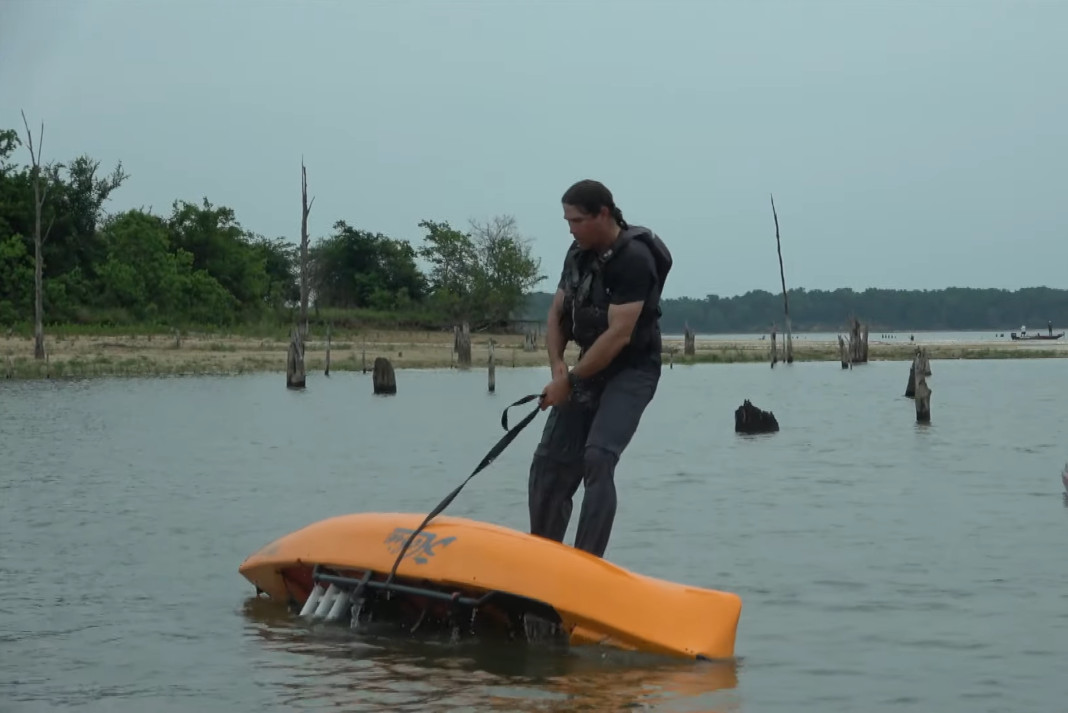Spend enough time on the water, and the inevitable will occur. As stable as fishing kayaks are, they are still kayaks after all, and there is always a possibility of capsizing. Knowing how to flip your kayak back over and climb back in isn’t just the best way to get back to fishing. It is also one of the most important safety skills you should have as a kayak angler.
Jeff Little recently hosted a course on how to recover from capsizing with the Women’s Fishing Federation. The course took place on the Lake Fork Reservoir in Texas. This video summarizes the class.

How To Flip Your Kayak Back Over
Seeing Jeff Little demonstrate a recovery and re-entry from capsizing a fishing kayak quickly illustrates just how difficult it can be. The wide hull and high sidewalls that make our sit-on fishing kayaks stable, also make a kayak tricky to flip back over and climb into from deep water.
Little uses a technique featuring a flip line to right the kayak. A flip line can be one of your YakAttack cam straps, a loop of tubular webbing, or rope. It’s then attached to one side and tossed over the capsized kayak, and the paddler uses the leverage of the line to pull the kayak over.

Making the Re-Entry
Once you’ve flipped a fishing kayak back over the work isn’t done. Part of recovering from capsizing your fishing kayak is also re-entry. This entire process is also referred to as self-rescue. Jeff Little shows us that attempting to climb over the side of a fishing kayak like the Hobie Pro Angler takes some effort. The side of the kayak close to the seat may seem like the most obvious position to climb back into the Pro Angler for example. But the highest point of the kayak is 20 inches. That is nearly two feet to climb over from the water.
To re-enter the kayak its better to find a low point that requires less effort, and allows you to land in an area of the kayak where you can swing your feet in and find your way to the seat.
Watching a video on self-rescue is one thing, but to make a recovery in real life is a whole different scenario. Repetition is the mother of skill. And the best way to learn these skills is with practice. Be mindful of the environment you are practicing in, and bring a buddy. Find calm conditions and minimal current. A lake with a beach that provides gradual depth is a great example. And remember to always wear your life jacket.


I have been lucky in the fact that the TWO times I’ve flipped my kayak, I’;ve been in shallow water. The second time I ruined my phone though… so that sucked.
Thanks for the great video! All of our kayak fishing here in Hawaii is offshore, so recovering from a flip is REALLY important. Typically we fish in 200-400 feet of water – so, no soft sandy river bottom to stand on, just the wide open Pacific. Thanks again – this is great content.
He loses his paddle twice, (gets zero points on not securing his paddle) and appears not to have a spare on board….he tosses the looped length of strap into the boat with no precaution to him becoming entangled in it during the capsize recovery (which the second speaker eludes to when he is showing the stirrup strap maneuver). Again a video with ACA “experts” offering good information without properly qualifying it, or dismissing it by not stressing it enough. The new fishing platform “kayak” community is starting to learn the basics that traditional, true kayakers have been practicing for decades and decades. Safety is always worth stressing and this hits many of the important points while dismissing or neglecting others. Seems many ACA videos do the same…..